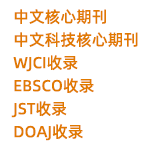

1. Submission method: Please register and submit your manuscript through the official website of this journal https://irrigate.whu.edu.cn. Manuscripts submitted through other channels will not be accepted. Authors must ensure that the manuscript is original and has not been published before. After receiving the manuscript, the editorial department will sign a copyright transfer agreement with authors. Once the article is published, all forms of copyright belong to the editorial office of China Rural Water and Hydropower.
2. Publishing Scope: This journal has columns including Hydrology and Water Resources, Water Environment and Ecology, Hydroelectric New Energy, Water Conservancy Engineering, Fluid Machinery, Hydraulics and River Sediment Dynamics, and Irrigation and Drainage. The submitted articles should be innovative, scientific, and readable, and follow the standard specifications for physical quantities, legal measurement units, and the format of figures and tables. Review articles should include the author's unique insights and viewpoints, and the suggested word count is 6,000-8,000 Chinese characters.
3. Manuscript Format: The article should be arranged in the following order: Title, Author Names, Author Affiliations, Chinese Abstract, Keywords, English Title, English Author Information, English Abstract, English Keywords, Main Text (including footnotes on the first page, introduction, materials and methods, results and analysis, discussion, conclusion, and references). For more detailed specifications, please visit our official website and obtain the "Manuscript Template" in the download center.
4. Headings: Article title should be concise and accurately reflect the main idea of the article. Avoid using uncommon abbreviations. Chinese title should not exceed 20 characters, and English title should not exceed 10 substantive words. The main text headings should be numbered consecutively using Arabic numerals, with a maximum of three levels (e.g., 1, 1.1, 1.1.1). The introduction section should start with the number 0.
5. Authors and Affiliations: All authors listed must have made substantial contributions to the article and assume corresponding responsibilities; ghostwriting is strictly prohibited. The affiliation information should include the full name of the institute, the city and province where it is located, and the postal code. Affiliations should be separated by semicolons and enclosed in parentheses. The English name format should be the surname in all capital letters followed by the given name with the first letter capitalized (e.g., LIU Xiao-hong, GUO Peng). Contact information should be noted in the footer on the first page. After submission, author information should not be changed without permission; otherwise, the editorial office has the right to reject the manuscript.
6. Abstract Writing: Chinese abstract should concisely summarize the main content and viewpoints of the article, including the four elements of objective, methods, results, and conclusions. The abstract should be independent and complete, and should not contain information or conclusions not mentioned in the article. The word count is generally controlled between 300-500 characters. English abstract should correspond to the Chinese abstract and can be more detailed, but should not include information not mentioned in the Chinese abstract. The English abstract should also include sections such as Objective, Methods, Results, and Conclusions. The English abstract should be written with correct grammar and clear expression. Professional vocabulary and terminology should be accurately translated and conform to English expression habits.
7. Footnotes: The footnotes on the titlepage of a manuscript should include the date of receipt (to be filled in by the editor), funding project (indicating the project name and number), author biography, and corresponding author information. The format must be strictly implemented.
8. Main Body Text: The introduction section should outline the research background, current status, purpose, and innovation points. The materials and methods section should provide a detailed description of the experimental design, materials, instruments, and methods to ensure reproducibility. The results and analysis section should make reasonably analysis based on experimental data. The conclusion section should be well-organized with concise and clear language.
9. Figures, Tables, and Formular: All figures and tables should be numbered in the order they appear in the text. Each figure should have a clear heading and annotation; tables should follow the three-line format, with all units marked in the upper right corner. Formular should be sequentially numbered according to their appearance in the document and formatted using a editing tool.
10. References: Please ensure that the listed references are closely related to your research topic, preferably citing high-quality references published both domestically and internationally within the last five years. For research articles, a minimum of 10 academic articles should be cited; for review articles, no fewer than 20 important references should be included. Avoid improper citations such as over-citation and non-standard citation. The reference list should follow the sequential numbering system and adhere to general standard for listing author names. Given the journal's inclusion in international databases, we also require an English translation of the references. Specific guidelines can be obtained from the Requirements for Figures and References in the download center on the official website.
Publication Fees
After the manuscript is accepted, this journal will charge a page fee (4,000 yuan per article, and an additional 2,000 yuan for expedited publication). Two complimentary copies of the current issue of the journal will be posted to authors upon publication.
Thank you for your reading. We look forward to your contributions.